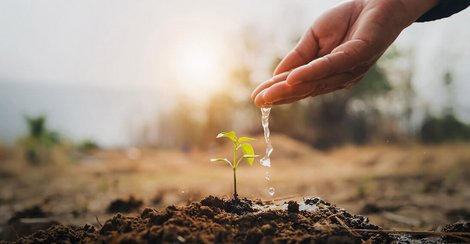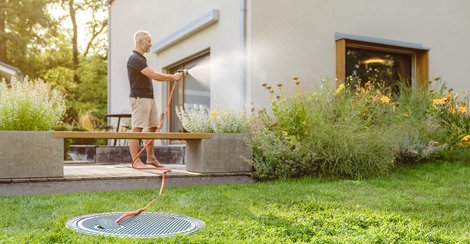Why drinking water is becoming more expensive in Germany - and how you can still save money
Crises such as wars and climate change also affect the water supply. Here we explain why drinking water is becoming more expensive in Germany and how to reduce water consumption and costs at the same time.
You turn on the tap - and clean tap water of drinking quality comes out around the clock. In Germany, of course, this is a global luxury that is becoming more expensive here. One example: Bodensee-Wasserversorgung, which supplies 320 towns and municipalities in Baden-Württemberg with a combined population of around four million, wants to increase the average levy for 2024 by around eight percent to 88 cents per cubic meter of water (1,000 liters). And according to forecasts by the water supplier, the price is even set to rise to 2.70 euros by 2041. All the more reason to think about how and where you can save this expensively treated water. More on this later ...
Why are drinking water prices rising?
Drinking water supply in Germany is generally in the hands of the local authorities and is not profit-oriented. Prices differ from municipality to municipality, sometimes significantly. They are usually higher in rural regions because there are fewer connections and the costs can be passed on to fewer people. In the Black Forest and the Swabian Alb in particular, the supply structures are very small-scale and decentralized. The fact that drinking water prices are currently rising in many municipalities is also due to the war in Ukraine and the rise in energy costs. These also affect the supply chain behind the tap, as the “Verband kommunaler Unternehmen e.V.” informs us.
Another important cause of the price increase is climate change. On the one hand, pollutant emissions in the water industry are to be reduced, on the other hand, suppliers must adapt to the increasingly frequent droughts and heavy rainfall events. As a result, significant investments are needed for the modernization and construction of infrastructure to adapt to changing conditions and maintain water quality. For the major project "Source of the future. Water for generations", the Lake Constance Water Supply Association is investing around 4.6 billion euros. For example, for the modernization and new construction of plants, but also for the technical adaptation to the changing water quality caused by climate change and the spread of the quagga mussel, which clogs water pipes.
Water suppliers throughout Germany are also affected by the overall increase in material and personnel costs. This in turn makes the operation and modernization of the infrastructure for drinking water and wastewater even more expensive.
You can find out how high the price of drinking water is in your own home town on an interactive map at the Baden-Württemberg State Statistical Office.
Save money with rainwater
According to the Federal Environment Agency, per capita consumption in German households averages around 130 liters of water per day - but consumers only drink or use around four percent of this for cooking. The majority of our consumption is for personal hygiene, toilet flushing, laundry and dishwashing. So, we use quite a few liters of precious water for purposes for which we don't actually need water of drinking quality. So why not use rainwater as an alternative? This can be collected in our underground tanks, for example, and used as service water in the garden and household - for flushing toilets or washing clothes, for example.




